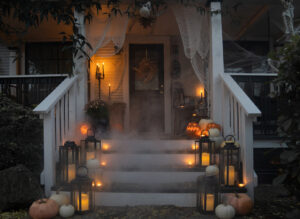They say the best defense is a good offense. This certainly applies when it comes to home maintenance. The winter often blows in with some chilly surprises for new homeowners—and builders often get a call saying “HELP!” A few quick pointers from you supports them in keeping their home running smoothly.
We’ve prepared this blog for you to use with your homeowners. Feel free to use it for inspiration or simply copy and paste! Or, you can share PWSC’s “Winter Home Maintenance Checklist” with your customers.
Looking to stay connected to former buyers or offer them additional peace of mind? Consider adding a HomePRO system and appliance warranty to your line-up.
Here are 10 winter home maintenance tips to keep your happy new home from getting frosty this winter.
Clean Exhaust Fans and Filters
Exhaust fans move air from inside a home to the outside. This rids the home of warm, humid air and helps dissipate odors. Keeping exhaust fans clean improves the home’s air quality, prevents mold and mildew, and helps eliminate air-circulated grime that builds up on walls. Keep air moving by cleaning exhaust covers, fan blades, and replacing any filters.
Inspect Wood-Burning and Gas Fireplaces and Chimneys
Chimneys should be inspected and cleaned annually before getting cozy by the fire. Burning wood leads to flammable creosote build-up inside the chimney. Check gas fireplaces for gas leaks, parts functionality, and ventilation blockages. Ignoring small issues today can lead to more expense repairs in the future
Check Smoke and Carbon Monoxide Detectors
The Centers for Disease Control and Prevention (CDC) reports that 50,000 people visit the emergency department annually due to carbon monoxide poisoning. For home fire deaths, 16% are caused by smoke alarms that failed to operate according to the National Fire Protection Association. Both are largely preventable problems. Homeowners should regularly check alarms and their batteries.
Fix Interior Leaks to Avoid Mold
Listen for drips and drops from pipes. Look for leaky faucets and running toilets. Mold from water exposure starts growing within just 24-48 hours but isn’t visible until about 18-21 days. At that point, significant damage to wood, floors, and other surfaces may already be significant, not to mention health-related problems.
Let in the Fresh Air to Reduce Toxin Build-up
Homes sealed up tight for winter do a great job of keeping the cold out and bad air in. Homes need to breathe, even in cold months. Condensation on walls and windows, stuffy air, and odors are signs of poor ventilation. Move throughout the home opening enough doors and windows to create a cross-draft for at least 15 minutes. Repeat frequently throughout the winter.
Insulate Pipes by Windows and Doors
Pipes can freeze when temperatures go below 20 degrees for six consecutive hours. A frozen pipe soon becomes a burst pipe, which can leak up to 10 gallons of water per minute, and those repairs can be costly! Insulating pipes improves a home’s plumbing performance, lifespan, and resistance to extreme temperatures. Pay special attention to colder areas like basements, attics, crawl spaces, exterior wall sinks, utility rooms, and garages. Pipes often freeze in these areas first.
Disconnect Garden Hoses and Winterize Outside Faucets
A frozen hose nozzle increases pressure on pipes and can damage a home’s plumbing system. To winterize exterior faucets, unhook hoses and drain water from the pipes if possible. Look for drips which can freeze the spigot. Install outdoor faucet covers and pack insulation inside them for added protection against Jack Frost.
Prune Trees and Branches Susceptible to Breaking
Falling trees and branches cause an estimated $1 billion in property damage annually. Removing dead or damaged branches and trees prevents them from hitting the home during winter freezes that weigh them down. Pruning trees while they are dormant also makes it easier for them to recover in the spring.
Remove Roof and Gutter Debris
Build-ups of leaves, twigs, and other debris create ice dams. This not only damages gutters, but also can lead to mold, rot, and water leaks in attics and ceilings. Repairs can cost several thousand dollars. Inspect your roof and gutters to mitigate any issues from accumulating ice and debris.
Keep Walkways Ice-free
Stopping ice from building up on driveways and sidewalks prevents dangerous slips and falls. Accumulated ice and snow also can worsen existing cracks or divots. Using the wrong salts and other de-icers can cause concrete damage. Avoid sodium and potassium-chloride products as they are corrosive. In addition to good old elbow grease to clear pathways, leverage less harmful substitutes like sand, cat litter, straw, and sawdust.
We hope you’re enjoying your new home!




